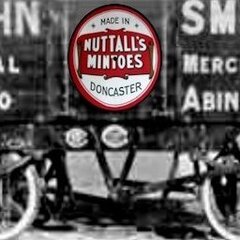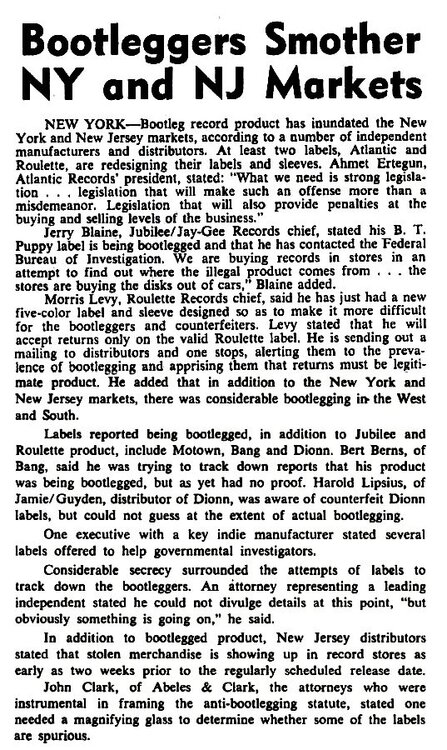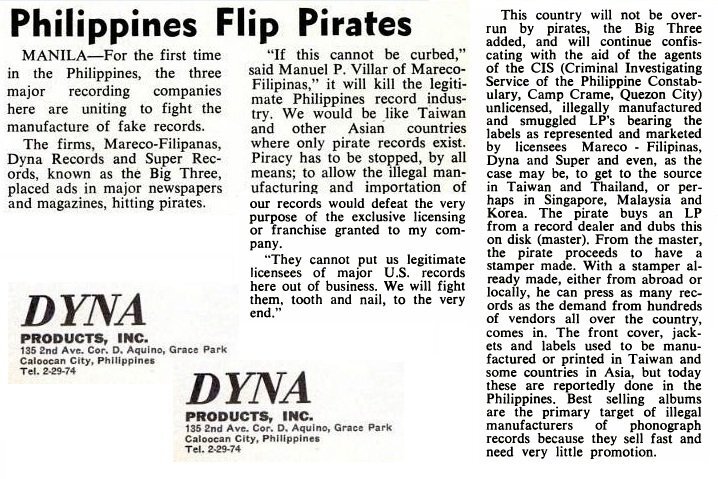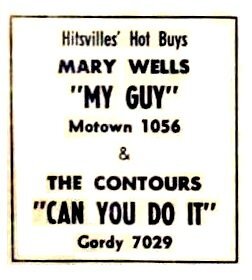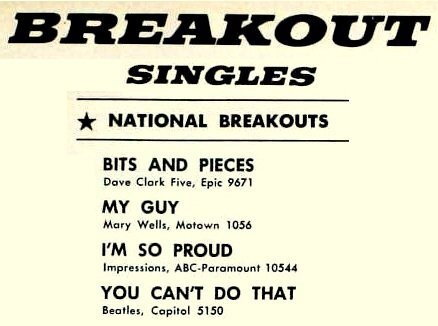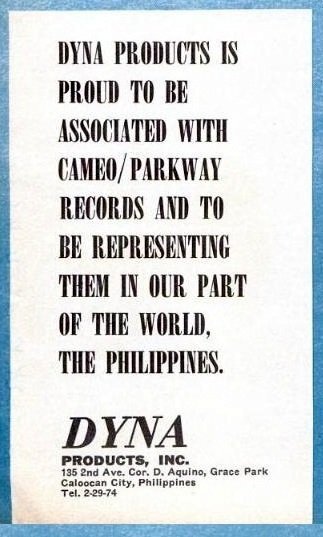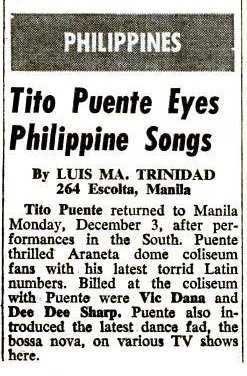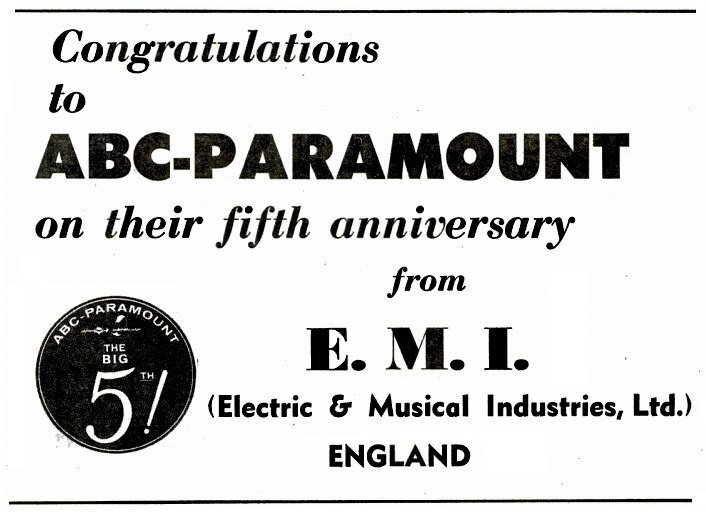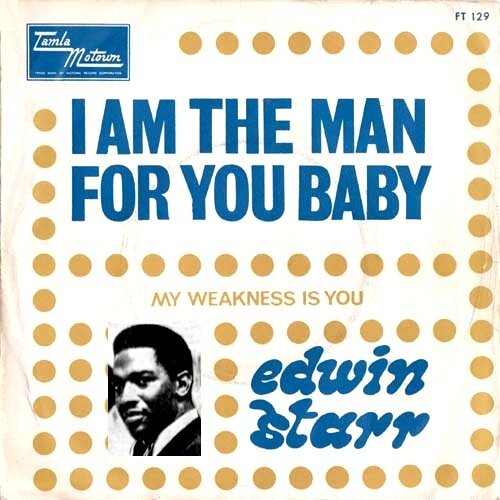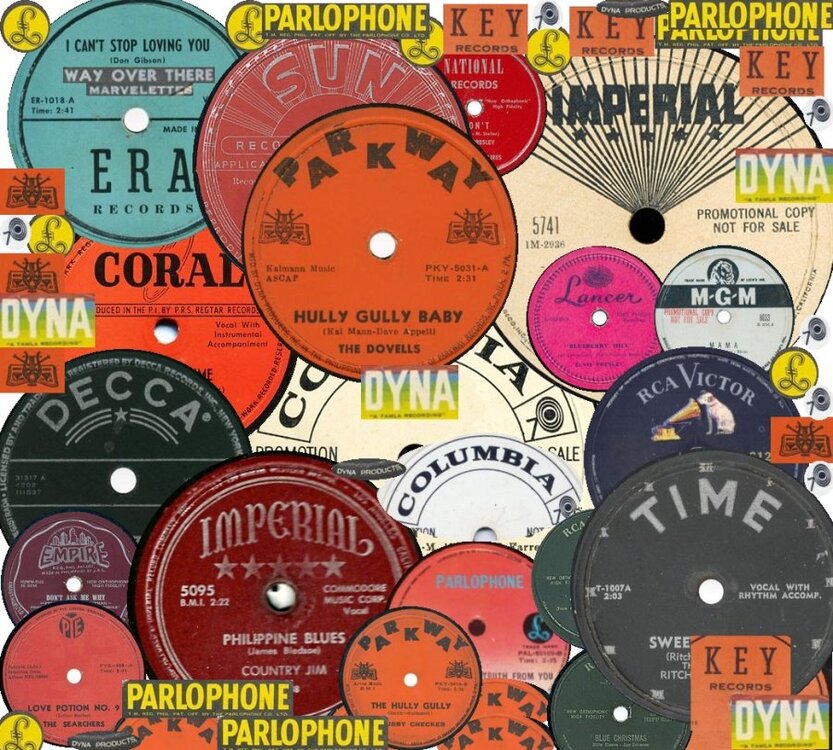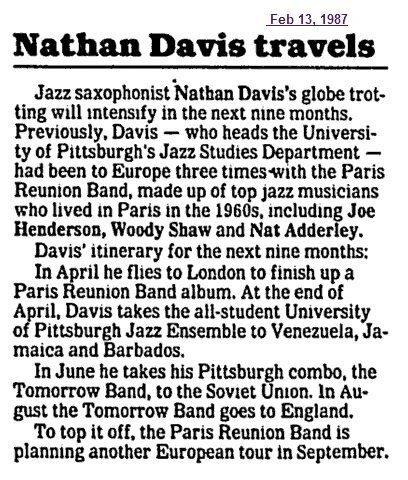Everything posted by Roburt
-
Bootlegging ... Not Just Ns Stuff
.... & you had to be a very brave man to bootleg Morris Levy's 45's back in the mid to late 60's ............ .......... if he caught you, you would be hung out a 5th storey office block window no doubt ....
-
Bootlegging ... Not Just Ns Stuff
......... and problems 'off the beaten track' for the majors back in the US ............. An outfit operating out of New Mexico in 72/73 that were brought to book ...............
-
Bootlegging ... Not Just Ns Stuff
Bootlegging was always a big problem in the far east ................... ............ the fall-out from 1970 incidents ................
-
Bootlegging ... Not Just Ns Stuff
Then there was the infamous Raynoma / Mary Wells Motown 45 incident in March / April 64. I guess she got 'her copies' of "My Guy" made up at a 'non-standard' pressing plant ..... ........ so how do you tell her versions of that 45 from the legit Motown ones ??
-
Bootlegging ... Not Just Ns Stuff
Seems that bootleg records have been about since records started being made. The big ticket items are of course the NS items + big rock acts live gig records. But lots of other examples come to mind .................. ............. some dating back to the early 60's ................ What labels (types of music) did the Mark Record Co of Utica, New York put out (legitimate stuff) ??
-
The Wheel And Late 60S Proto Northern Soul Scenes
There were lots of clubs that had live 'soul' acts on but didn't hold niters .............. Boston Starlight Room – Ferris Wheel Hull Gondola -- Chris Farlowe Bradford String Of Beads – Eric Burdon & The Animals type R&B groups + proper soul acts. Cleethorpes Purple Onion Club – Alan Bown, etc. Attic Doncaster -- Billy Stewart, Drifters, etc. Retford Broken Wheel -- lots of soul acts There were also lots of clubs on the south coast (Brighton, Portsmouth) that put on loads of live soul acts + in places such as Dunstable
-
The Wheel And Late 60S Proto Northern Soul Scenes
There were niter type venues in the West Yorks towns around the time after the Mojo / Nite Owl closed (late 67 thru into 68). Seem to recall places such as the Bin Lid in Dewsbury & clubs in Huddersfield / Bradford area. The Bee Gee in Leeds had been a mod / soul club around 66/67 but have no idea when that closed down. There was a big Hull soul crowd in 66/67 but many of those people drifted off the niter scene after the Mojo closed (some old Mojo-ites along with newer blood from Hull, Goole, Dony, Lincoln, Sheffield, Notts, Peterboro did start going to the Wheel but lots packed up niters). Of course the Notts lads had there own niter clubs (Dungeon, Beachcomber, etc). They held niters in Hull the odd time around 69/70 I seeem to recall (at the Discotheque on Whitefriar Gate). Always a big crowd from the Midlands at the Wheel (Kidderminster, Peterboro, Walsall, Brum area) so guess they didn't have their own niter after the Nite Owl closed. Course, after the Wheel, there was Up The Junction in Crewe & VaVa's. There were strong non-niter soul club scenes all across Yorkshire & down into Nth Notts (Broken Wheel, Retford). When did they start holding niters in Wakefield ? Back in the mid 60's, some of the Dony soulies would have a big night out & catch the train to London to attend some of the soul clubs around Paddington, Soho & Liverpool St areas -- but those trips were infrequent.
-
How Cool Is This
The guy (lead singer) is obviously miming. So would the TV station people pre-record their track (to elimate any live mistakes) or did the group have to turn up with a tape that they (or their record label) had pre-prepared ?? I know its hard to say what went on with regard to this particular show. But then back in the 60's, every city had a TV stn that did a 'Bandstand' type music show & they will all have followed similar procedures / routines I guess.
-
Obscure - unusual Foreign Releases
I guess that with Dee Dee Sharp playing gigs there and dance 45's by the likes of Chubby Checker also being popular with locals, Cameo & Parkway were sure to have good local representation .............
-
Obscure - unusual Foreign Releases
Back to the Philippines for a second or two .......... The US military always had a large presence in the Philippines. The US navy had a big base at Subic Bay, whilst Clark Air Force Base was the home for 100's of American pilots. During the 60's (& into the 70's during the Virtnam War era) 1000's of Americans were either based there or took 'rest leave' on the islands. Because of this, American entertainers were regular visitors, with this fact being reflected in the number of records by American artists that were issued there. As early as 1962, the likes of Dee Dee Sharp & Tito Puete did shows there .....................
-
Obscure - unusual Foreign Releases
Of course, EMI represented quite a few US labels and put their stuff out around the world ..............
-
Obscure - unusual Foreign Releases
-
Eula Cooper Needs Your Help
I'm sure I put a box full of Numero CD's in this bag earlier ........
-
Eula Cooper Needs Your Help
Eula during her Prestatyn sound check back in March 2009 .........
-
Obscure - unusual Foreign Releases
It might be a good idea to try & post up a scan of soul 45's put out by say EMI in countries from around the world. Most big labels had representatives in many different countries and EMI were no different as they had licensees in many countries ...... ... but EMI also had a 'global spread' itself, having wholly owned branches in numerous different countries. These countries where EMI operated owned subsiduary's included the following :- US, Canada, Brazil, Argentina, Chile, Jamaica, Barbados, Kenya, Nigeria, South Africa, Ireland, France, Denmark, Sweden, Portugal, Italy, Greece, Lebanon, Pakistan, India, Hong Kong, Singapore / Malaysia, Australia & New Zealand. I think EMI was represented in Germany by another company though 45's did escape there on 'look-alike' EMI labels (Tamla Motown for instance). In some other countries, the local company would release EMI related 45's on their own labels rather than using a copy of the original UK label. Following a lead from the UK, in areas where the company had an owned subsiduary, EMI would release stuff on their usual labels (Parlophone,Stateside, Tamla Motown, etc.). So there will be soul 45's on the likes of the Stateside label in well over 20 countries I'd say.
-
Eula Cooper Needs Your Help
A US newspaper story from a few years ago ......... ATLANTA'S SOUL SURVIVORS ........ The Atlanta Journal-Constitution ............ By Drew Jubera ... ....... ..... Sunday, April 05, 2009 In 1968 Eula Cooper was just a poor kid from Vine City, hardly 14, fooling around inside a West End dress shop with two girlfriends while doing what she always did: singing out loud. A salesman said if she wanted to sing so badly she should visit the record company upstairs. So Cooper and her friends skipped up to the second-floor office of Tragar Records, where owner Jesse Jones sat behind a desk. One girlfriend said, “This is Eula!” Another said, “She can sing!” Cooper, hand on her skinny hip, added, “Yeah!” So Jones told her to sing. She warbled a soul number she’d written herself called “Shake Daddy Shake.” “And the next week,” said Cooper, now 55 and living outside Houston, “we were in the studio.” That’s the kind of unfussy, off-the-street scene that summed up Tragar Records, a part of what passed for the soul music recording industry in Atlanta during the 1960s and ’70s. Neither Cooper, Jones nor anybody else ever did anything but go broke making records for Tragar. Yet, thanks largely to an obsessive collector of Georgia soul music named Brian Poust, “Shake Daddy Shake” and 49 other tracks from Tragar (later called Note) have been unearthed for a compilation CD called “Eccentric Soul: The Tragar & Note Labels.” Since its release by the Chicago company Numero Group, Jones finally feels appreciated, Cooper feels revived (after not performing for almost two decades, she sang recently at a soul festival in the United Kingdom), and a piece of lost Atlanta has been preserved..........
-
Obscure - unusual Foreign Releases
By all accounts, 78's lasted in South Africa until the mid 60's (65/66) and for even longer in India (almost till the end of the 60's) ..... so no doubt some soul goodies were made available in those two countries.
-
Obscure - unusual Foreign Releases
Can't tell if any of these would be things we'd be interested in (most seem to be by local artists) ....
-
Obscure - unusual Foreign Releases
Of course a couple of the Philippines Motown 78's are well documented, but what about the more obscure Philippines Cameo & Parkway 78 releases ? Were there any Sam Cooke 78's on RCA released there ? Any Jackie Wilson 78's on Coral (or Decca) ? Have discogs been drawn up for 45 & 78 releases from the 60's in the likes of Singapore, Pakistan, India & the Philippines ??
-
Obscure - unusual Foreign Releases
Just about the most obscure of records are the late 78's (early to mid 60's) from countries such as Pakistan, India & the Philippines (maybe more countries as well; Singapore & the like ?). EMI were a strong force in the likes of Pakistan & India and so lots of UK pop (+ US stuff licensed in by EMI UK) escaped in those areas, but sales figures weren't huge at the time & many of the discs have broken down the years. Seems to have been lots of different Coral, RCA, Imperial, Columbia, Decca, Sun, MGM , Cameo & Parkway plus some Motown stuff made available there. Most folk don't collect 78's though lots of 40's / 50's jazz cuts are collectable coz they are the 'original format' for those tracks. Here's a montage of some interesting Philippine 78's .......
-
Early Skinheads & Soul / Rare Soul 68-72
I was going to niters from 66 onwards (till around 70/71 at least) ...... I don't recall seeing any skinheads at clubs like the Mojo, Nite Owl, Crystal Bowl (all too early for skins) or the Wheel.
-
Early Skinheads & Soul / Rare Soul 68-72
Our kid (smudger on here) should know sumat bout Dony skinheads back arounf 69/70 as some of his school mates were local skins. At least, he used to fetch em round to our house to buy reggae 45's off me.
-
Otis Williams And The Temps
Last I heard the D.E.Temptations Review also featured David Sea (great singer, loads of brill MS sides), Mike Potello, Chris Arnold and Paul Williams Jr.(son of original Temptations member Paul Williams). They are known for putting on a better show than Otis & his bunch.
-
News: Marie Knight That's No Way To Treat A Girl
She did. They toured together for 3/4 years (late 40's / early 50's) & even recorded together -- they performed gospel stuff as would be expected. I skirted over much of her gospel period but did make a mention of this .............. .... In 1950, together with Rosetta Tharpe, she sang before an audience of thousands of gospel fans at a big show in Washington.
-
Lovations - Heaven Told Me So
We'd know even more about the Lovations and Segue Records if only you had asked us back in 1987 ..... ....... when the label's Nathan Davis was in London a couple of times & we could have asked him ................

